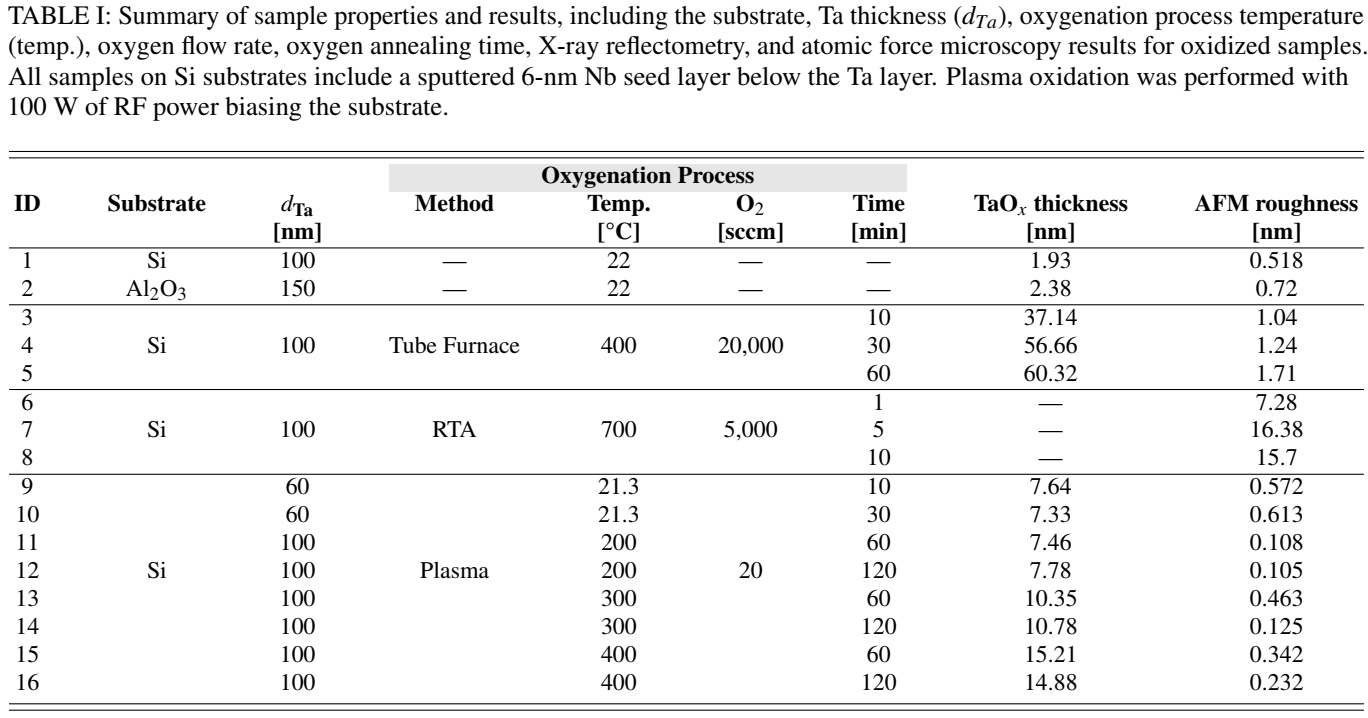Fabrication and Structural Analysis of Trilayers for Tantalum Josephson Junctions with Ta2O5 Barriers
2025-10-24 15:09
678 浏览
Tantalum (Ta) has recently emerged as a promising low-loss material, enabling record coherence times in superconducting
qubits. This enhanced
performance is largely attributed to its stable native oxide, which is believed to host fewer two-level
system (TLS) defects– key contributors to
decoherence in superconducting circuits. Nevertheless, aluminum oxide
(AlOx) remains the predominant choice for Josephson junction barriers in
most qubit architectures. In this study, we
systematically investigate various techniques for forming high-quality oxide layers on α-phase tantalum
(α-Ta) thin
lms, aiming to develop effective Josephson junction barriers. We explore thermal oxidation in a tube furnace, rapid
thermal annealing,
as well as plasma oxidation of both room-temperature and heated Ta lms, and propose a mechanistic
picture of the underlying oxidation mechanisms.
All methods yield Ta2O5, the same compound as tantalum’s native
oxide. Among these, plasma oxidation produces the smoothest and highest-quality
oxide layers, making it particularly
well-suited for Josephson junction fabrication. Furthermore, we demonstrate the successful epitaxial growth of α-Ta
atop
oxidized α-Ta lms, paving the way for the realization of trilayer Ta/Ta-O/Ta Josephson junctions with clean, low-loss
interfaces.

